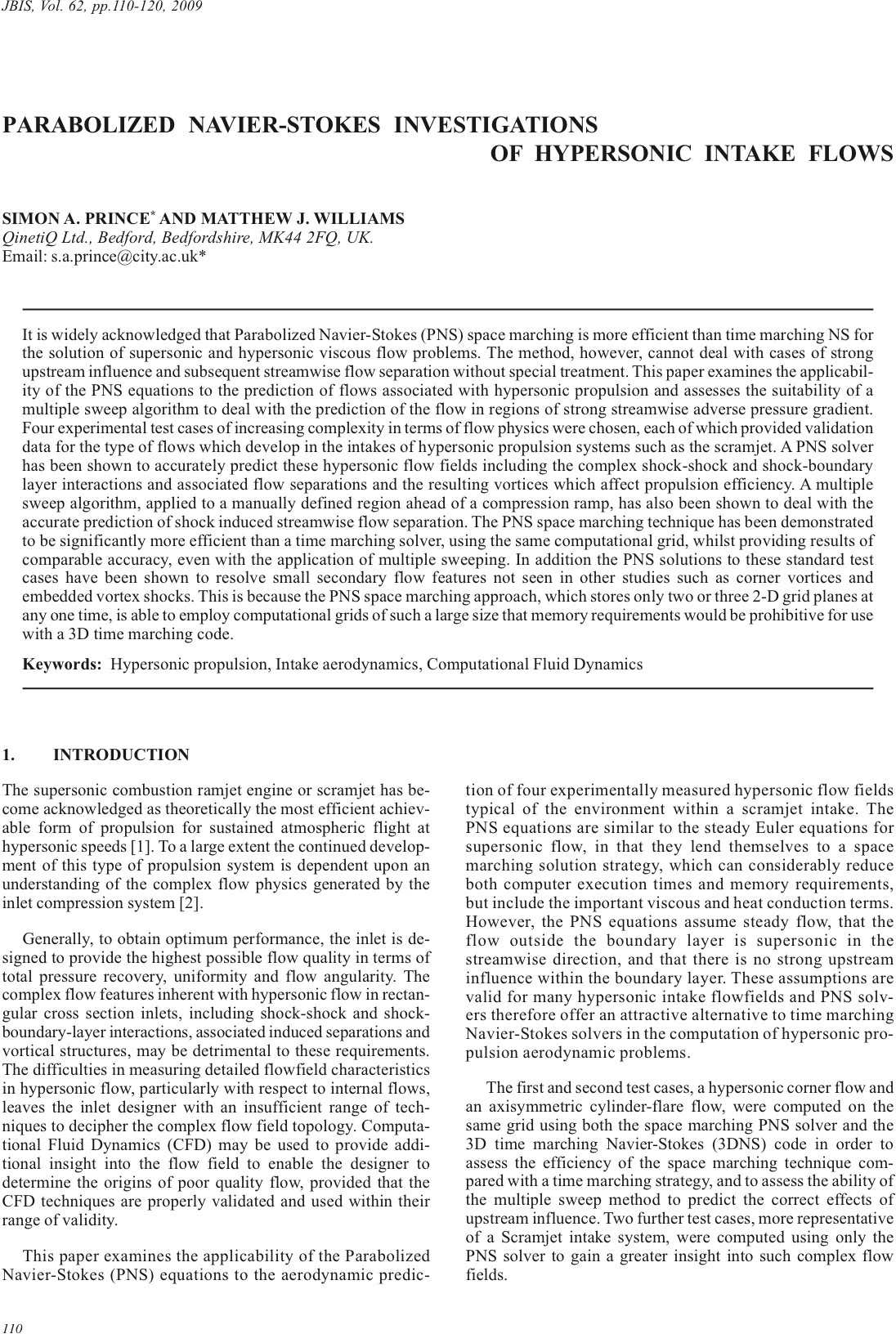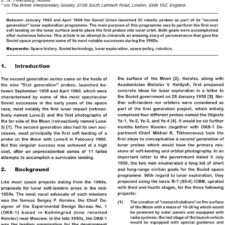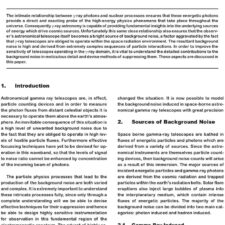Parabolized Navier-Stokes Investigations of Hypersonic Intake Flows
£5.00
S. A. Prince; M. J. Williams (2009), JBIS, 62, 110-120
Refcode: 2009.62.110
Abstract:
It is widely acknowledged that Parabolized Navier-Stokes (PNS) space marching is more efficient than time marching NS for the solution of supersonic and hypersonic viscous flow problems. The method, however, cannot deal with cases of strong upstream influence and subsequent streamwise flow separation without special treatment. This paper examines the applicability of the PNS equations to the prediction of flows associated with hypersonic propulsion and assesses the suitability of a multiple sweep algorithm to deal with the prediction of the flow in regions of strong streamwise adverse pressure gradient. Four experimental test cases of increasing complexity in terms of flow physics were chosen, each of which provided validation data for the type of flows which develop in the intakes of hypersonic propulsion systems such as the scramjet. A PNS solver has been shown to accurately predict these hypersonic flow fields including the complex shock-shock and shock-boundary layer interactions and associated flow separations and the resulting vortices which affect propulsion efficiency. A multiple sweep algorithm, applied to a manually defined region ahead of a compression ramp, has also been shown to deal with the accurate prediction of shock induced streamwise flow separation. The PNS space marching technique has been demonstrated to be significantly more efficient than a time marching solver, using the same computational grid, whilst providing results of comparable accuracy, even with the application of multiple sweeping. In addition the PNS solutions to these standard test cases have been shown to resolve small secondary flow features not seen in other studies such as corner vortices and embedded vortex shocks. This is because the PNS space marching approach, which stores only two or three 2-D grid planes at any one time, is able to employ computational grids of such a large size that memory requirements would be prohibitive for use with a 3D time marching code.





